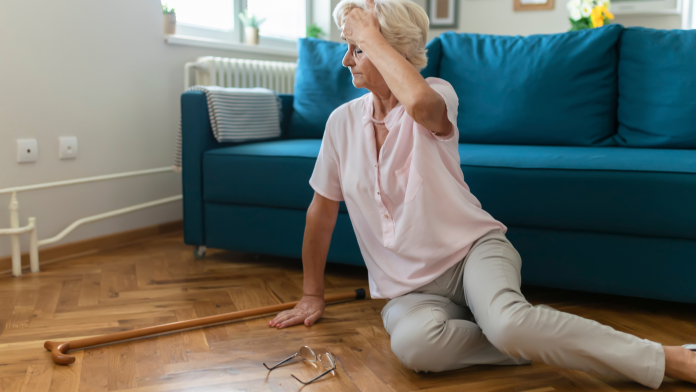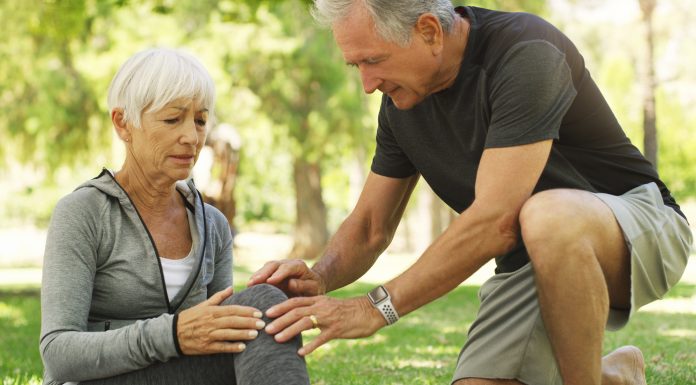The problem of falling among seniors cannot be overstated. According to the Centers for Disease Control and Prevention, older Americans suffer from 36 million falls each year, resulting in 32,000 deaths. That makes falls the leading cause of accidental death among seniors in the U.S.
Moreover, 20 percent of falls lead to injuries among those ages 65 and over, and some 3 million older adults require an emergency-room visit as a result of an injury suffered in a fall.
Falls occur because of weakened lower extremities or because seniors’ balance isn’t what it once was. They occur because older adults’ vision has declined or because they aren’t getting proper nourishment. And they occur because there aren’t enough handrails or grab bars in seniors’ homes or the long-term-care facility in which they might happen to live, or because the lighting is inadequate.
In short, falls happen for any number of reasons. Their impact can also be felt in any number of ways. Economically speaking, it is estimated that the medical costs resulting from falls run as high as $50 billion each year, with hip fractures being a particular concern; 95 percent of them occur because of falls, resulting in 300,000 seniors being hospitalized each year.
It is also noteworthy that while roughly five percent of older adults reside in nursing homes, they account for two of every 10 deaths that result from falls. Another 20 percent of those who fall in such facilities suffer injuries that negatively affect their mobility or functional ability.
In a paper summarizing fall risk-management strategies, the Department of Health and Human Services listed other possible deleterious effects of falls as being a desire on seniors’ parts to restrict activities, and “depression, helplessness, social isolation, loss of confidence in independent mobility, injuries and even death.”
As a result, HHS recommends that within 24 hours of admission to a facility, staff evaluate seniors’ gait, balance and lower-extremity strength, as well as their medication regimen, blood pressure and previous history of falls (if any). Moreover, potential environmental issues like those mentioned earlier – the presence of grab bars, adequate lighting, etc. – should be examined.
Periodic reevaluation is also recommended, particularly after a fall occurs.
Other outlets also mention the need to monitor medication and the right physical accouterments, while adding that regular vision checks, proper footwear, a healthy diet and regular exercise are also of great benefit.
The last of those things has particular resonance for those who work with seniors, and was explained in depth on the website Palo Alto Online by Jessica Davidson, an internist at the Palo Alto (Calif.) Medical Foundation and a former director of a retirement community in that city:
“There are a lot of different things that go on as people get older — the muscle mass tends to decrease; processing time is longer; the ability of the nerves and joints to sense where the body is in space becomes less effective and the vestibular system that controls balance in the inner ear gets less sensitive and less able to do its job. You can’t fix what’s happening in the body, but what you can do is compensate for those things.”
Any kind of exercise is helpful, Davidson explained, especially given the fact that so many of us live increasingly sedentary lifestyles as we get older, but she believes there is particular benefit in those activities that improve balance, like yoga and tai chi. Others, like 85-year-old yoga teacher Lily Anne Hillis, agree. She told that same website that repetition leads to muscle memory, which in turn results in the proper instinctive reaction when a fall occurs.
She further explained that the bottom of each foot contains 25,000 nerve endings, which are in constant contact with the brain. It’s a matter of conditioning those nerves – one reason she encourages all her students to practice in bare feet – of making it second nature as to how one might react to a potential fall, regardless of age.
The risks presented by falls have also led to technological innovation, like LED lights that reportedly result in a 43 percent reduction, and the use of music to enhance the memory, mood and exercise routines of Alzheimer’s patients, who are particularly susceptible to tumbles.
The AgeTech industry as a whole, judged to be an $8.5 trillion market opportunity that features such technologies as telemedicine, wearables and remote patient monitoring, also has seen developments like an app-based exercise program designed to improve balance and a walker that features cameras, sensors and artificial intelligence that tracks the user’s gait.
The obvious conclusion to draw is that the issues surrounding senior falls are many and varied. There is no one answer that will minimize them. Rather, it is a matter of understanding the many factors in play, and adopting a multi-pronged approach. That’s what will lead, in time, to a solution.























